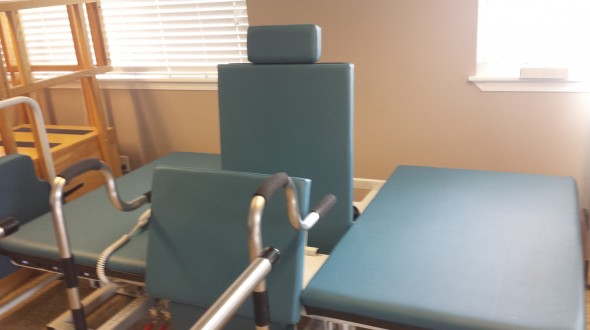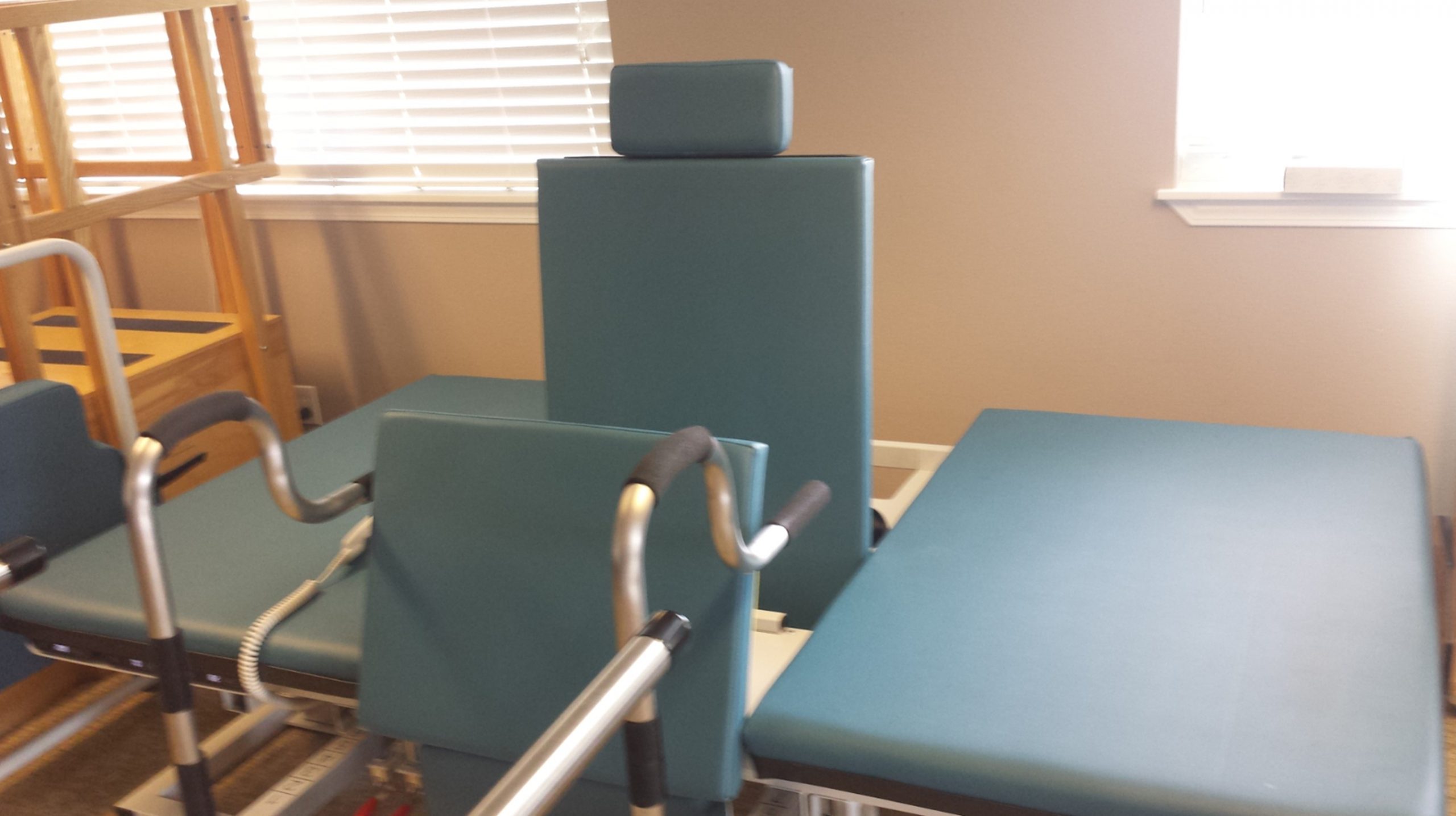 Sometimes, one new piece of equipment makes all the difference for a patient. Take, for instance, the case of one resident at Mountain View Rehabilitation and Care Center (MVR) who was admitted following a right middle cerebral artery aneurism, with coil embolization of aneurism, aneurism perforation and resultant subarachnoid hemorrhage. Hospitalized for three and a half months prior to admission at MVR, Patient R. entered our facility with multiple challenges preventing her from living a more independent life. However, with our therapists’ patient and caring approach, plus the addition of a Barihab table to her treatment routine, R. has made incredible strides in her recovery.
Sometimes, one new piece of equipment makes all the difference for a patient. Take, for instance, the case of one resident at Mountain View Rehabilitation and Care Center (MVR) who was admitted following a right middle cerebral artery aneurism, with coil embolization of aneurism, aneurism perforation and resultant subarachnoid hemorrhage. Hospitalized for three and a half months prior to admission at MVR, Patient R. entered our facility with multiple challenges preventing her from living a more independent life. However, with our therapists’ patient and caring approach, plus the addition of a Barihab table to her treatment routine, R. has made incredible strides in her recovery.
At admission, R. had a host of challenges to overcome, among them:
- Severe right-side neglect causing her to persist in twisting her trunk to the left and grabbing the bed sheets and bed rails on her left side
- Inability to maintain an upright position for more than five minutes
- Total dependent standing pivot transfer with a left prosthetic limb, requiring two therapists due to R.’s severe retropulsion and falling to the left
- Peg tube for feeding with NPO
- Two therapists required for bed mobility, including rolling and transferring from supine to sitting at the edge of the bed
- Total dependency for all dressing, hygiene and grooming
Before joining us at MVR, R. had received some rehab services at the hospital, but she had failed to make any progress. Her situation changed once our therapists began to work with her and encourage progress throughout her ups and downs.
Initially, R. required transfer with a Hoyer lift and had difficulty remaining seated in her wheelchair because she was sliding or squirming out of it. Therapists continued to work with her on standing pivot transfers, balancing from sitting, and sitting balance on the treatment mat in the therapy gym. Eventually, R. progressed to standing by positioned parallel bars close to the high-low table.
The game-changer came about when MVR acquired a Barihab table and began to incorporate it into R.’s therapy regimen. Because the table provides greater security, R. felt less fear of falling, and over time, she gained greater confidence in her own mobility. She now stands using the Barihab table and self-supports with her UEs while ambulating through the parallel bars, then transitions to a FWW and walks 35 to 40 feet while wearing her left prosthetic limb.
Says Sam Wipf, OTR/L (DOR), “We have just opened a new world of possibilities with the Barihab table, no question about it.”
R.’s family and therapists agree that the table has enabled a remarkable recovery for the resident. Among her many accomplishments, she is now self-feeding on a mechanical soft diet, no longer requires a bed pan and needs one person for toileting, ambulates with a FWW across the rehab gym and into the hallway, and is completing the majority of her transfers with a standing pivot approach with one person.
The Barihab table has proved to be an invaluable addition to MVR’s therapy program — one that continues to benefit patients like R. and others. “I can now stand residents who I never thought I would ever be able to stand,” says one therapist.
Adds one family member of another patient: “He actually stood for 10 minutes. He hasn’t stood for months.”
Another therapist perhaps sums up our sentiments about the Barihab table most succinctly: “Why didn’t we know about this before?” Now that we know, we expect to continue using the Barihab table for many of our patients who are mobility-challenged.

